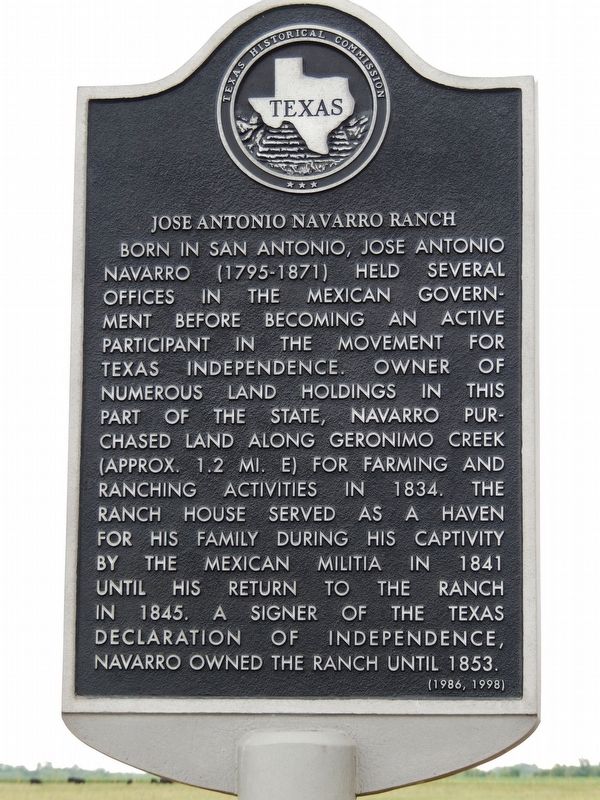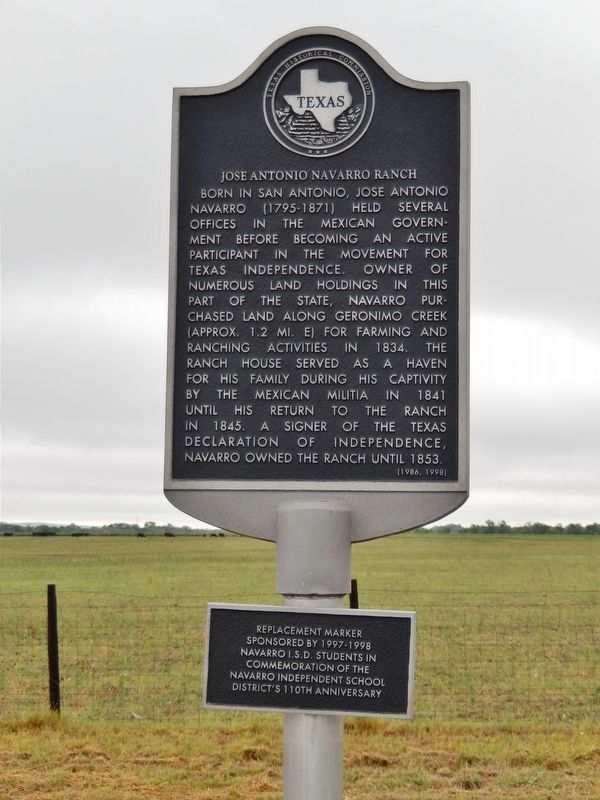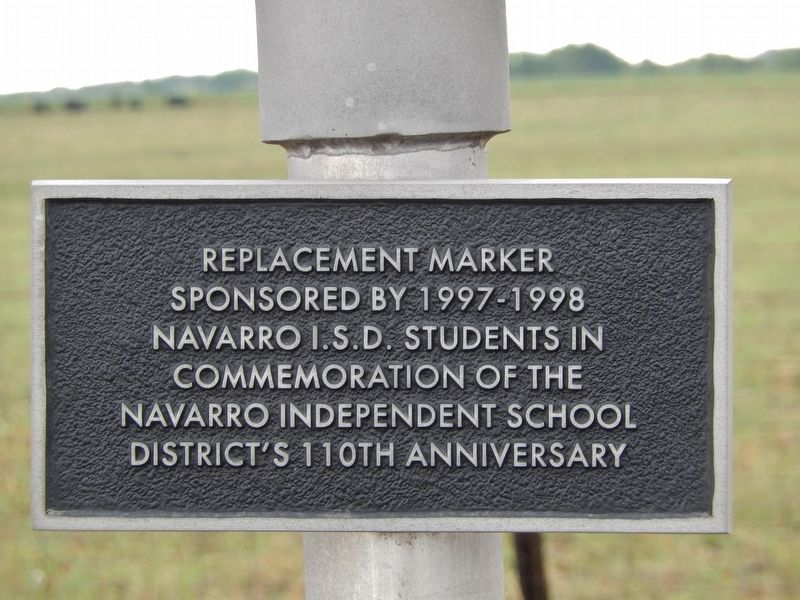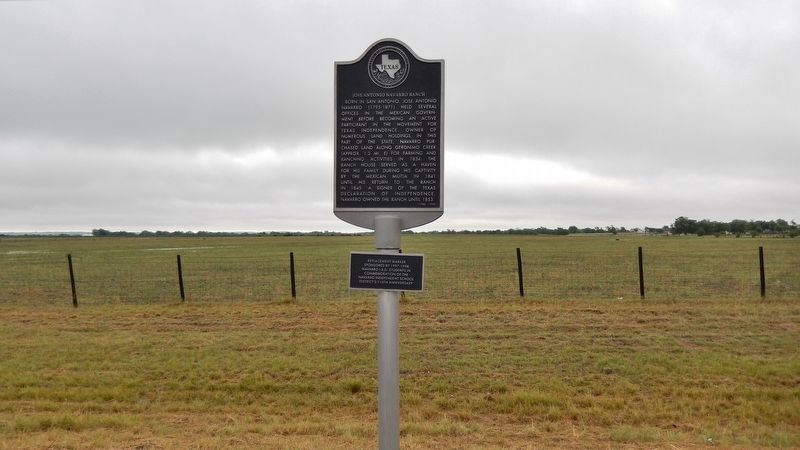Near Seguin in Guadalupe County, Texas — The American South (West South Central)
Jose Antonio Navarro Ranch
Born in San Antonio, Jose Antonio Navarro (1795-1871) held several offices in the Mexican government before becoming an active participant in the movement for Texas independence. Navarro possessed numerous landholdings in this part of the state. In 1832, he purchased land along Geronimo Creek (approx. 1.2 mi. E) for farming and ranching activities. The ranch house served as a haven for his family during his captivity by the Mexican militia in 1841 until his return to the ranch in 1845. A signer of Texas Declaration of Independence, Navarro owned the ranch until 1853.
Erected 1986 by Texas Historical Commission. (Marker Number 2852.)
Topics. This historical marker is listed in these topic lists: Hispanic Americans • Settlements & Settlers • War, Texas Independence. A significant historical year for this entry is 1832.
Location. 29° 38.427′ N, 97° 58.024′ W. Marker is near Seguin, Texas, in Guadalupe County. Marker is on State Highway 123, 3.1 miles north of Interstate 10, on the right when traveling north. Marker is located in a pull-out on the east side of the highway. Touch for map. Marker is in this post office area: Seguin TX 78155, United States of America. Touch for directions.
Other nearby markers. At least 8 other markers are within 5 miles of this marker, measured as the crow flies. 1918 Moline Universal Tractor (approx. 0.9 miles away); Navarro School (approx. 1.1 miles away); Friedens Church (approx. 2.9 miles away); Lone Oak Cemetery (approx. 3 miles away); The Women's Club Rooms (approx. 4.7 miles away); Site of Dietz Community (approx. 4.8 miles away); Juan Seguin School (approx. 4.8 miles away); Black Education in Seguin (approx. 4.8 miles away). Touch for a list and map of all markers in Seguin.
Related markers. Click here for a list of markers that are related to this marker.
Also see . . .
1. José Antonio Navarro.
Along with his uncle, José Francisco Ruiz, and Lorenzo de Zavala, he became one of the three Mexican signers of the Texas Declaration of Independence. Later, he favored the annexation of Texas to the United States, and was the sole Hispanic delegate to the Convention of 1845, which ultimately accepted the American proposal. He remained to help write the first state constitution, the Constitution of 1845. He was twice elected to the state Senate. In 1846, in the Texas legislature named the newly established Navarro County in his honor. (Submitted on December 8, 2017, by Cosmos Mariner of Cape Canaveral, Florida.)
2. José Antonio Baldemero Navarro.
Navarro owned granted and purchased lands in current Atascosa, Karnes, Guadalupe, Travis and Bastrop counties on which he developed productive ranch enterprises while he practiced law, was a merchant and served the people of the State at all levels of government. The Navarro family home ranch in 1838 was north of current Seguin (then Walnut Springs) on San Geronimo Creek near Ewing Springs. (Submitted on December 8, 2017, by Cosmos Mariner of Cape Canaveral, Florida.)
3. Giants of Texas History: Jose Antonio Navarro.
José Antonio Navarro was the most influential Tejano of his generation. He championed Texas independence from Mexico, then fought for the rights of Tejanos as citizens of the Republic of Texas and the United States. A Texas patriot to the end, Navarro supported secession from the United States in 1861, and his four sons served in the Confederate army. He died in 1871. (Submitted on December 8, 2017, by Cosmos Mariner of Cape Canaveral, Florida.)
Credits. This page was last revised on August 27, 2020. It was originally submitted on December 8, 2017, by Cosmos Mariner of Cape Canaveral, Florida. This page has been viewed 760 times since then and 113 times this year. Photos: 1, 2, 3, 4. submitted on December 8, 2017, by Cosmos Mariner of Cape Canaveral, Florida. • Bernard Fisher was the editor who published this page.



